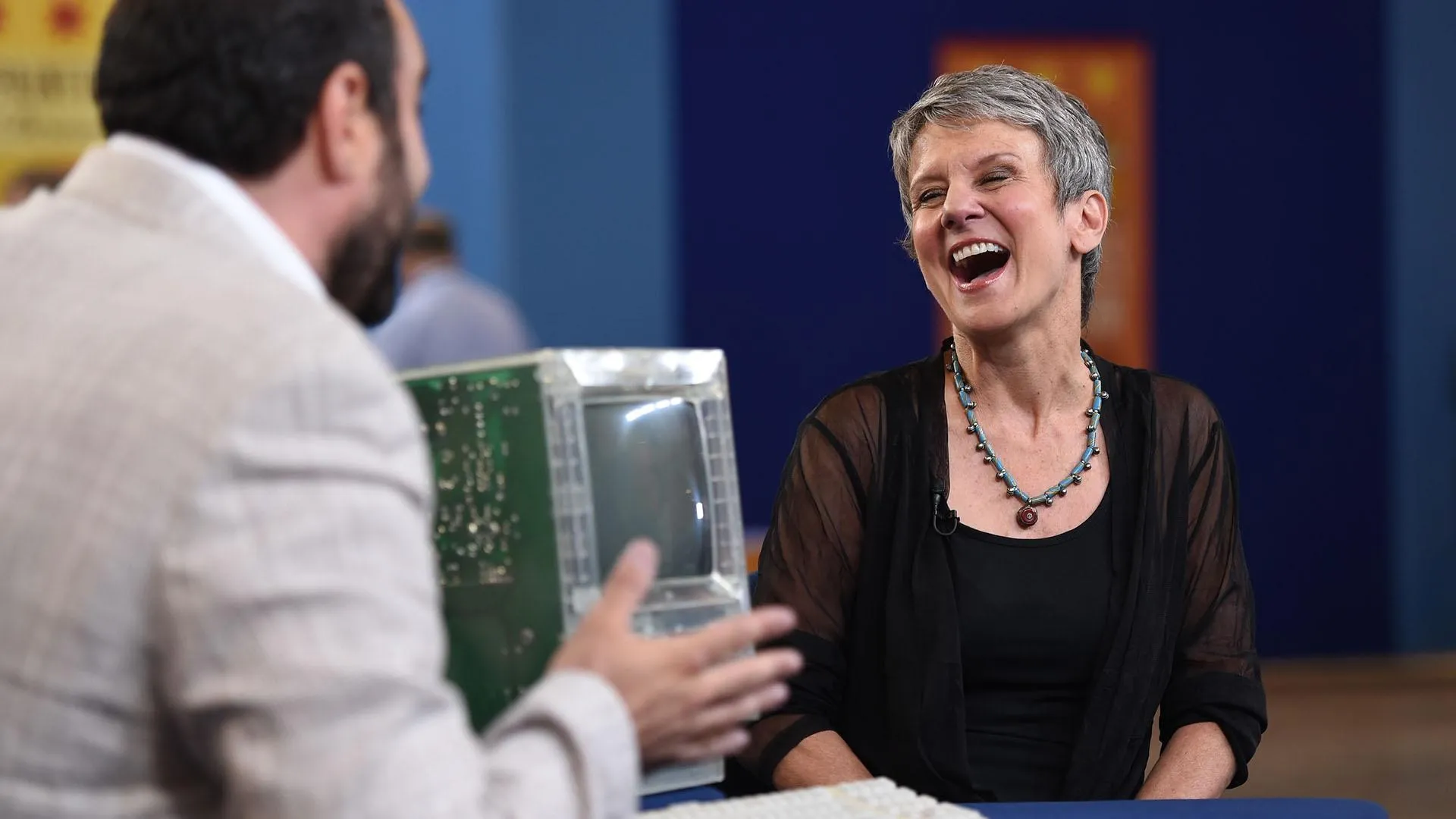GUEST: Well, I've brought in my grandfather's clock that was given to me when I was about 20 years old. He purchased it in France. He did a lot of traveling for his business with my grandmother, who was a renowned designer. And I was known to climb on his desk and swing it, and so that's why it was given to me.
APPRAISER: Okay, but you've stopped doing that now.
GUEST: No, I have not been swinging the clock.
APPRAISER: Okay, all right, good. All right. So what we have here are actually two things. This is a paperweight clock. Some people call it a ball clock. And it was made about 1900. So it's over 100 years old. They're very high quality. You can see they have this wonderful movement that you can see inside the crystal. This one is marked "France." Most of them were made in France. And it was meant to sit on the desk of an executive. As a matter of fact, this has a flat area right here that's supposed to allow you to stand it up. But someone has taken it apart and turned it so that it's upside down now. It should be turned so that it sits like that when it's on the desk. But it has this wonderful pedestal that it hangs on, which undoubtedly is original. It's from the same period. So I'm sure this was a very upscale example. Do you have any idea of what it's worth?
GUEST: Well, my dad thought it was worth about $800, but I have no idea.
APPRAISER: Well, I've seen this paperweight clock by itself sell for not quite that much, but close to it. I've seen these sell in the $500, $600 price range in good condition, running. But the pedestal with this wonderful dog's head and the base with a little bit of bronze around the bottom, I mean, that's really fantastic, and it puts it into a whole different category of sculpture. It becomes a sculpture. And I would think that in a retail situation with the clock running that a collector would pay easily $2,000 to $2,500 for this piece.
GUEST: Oh, that's great.











